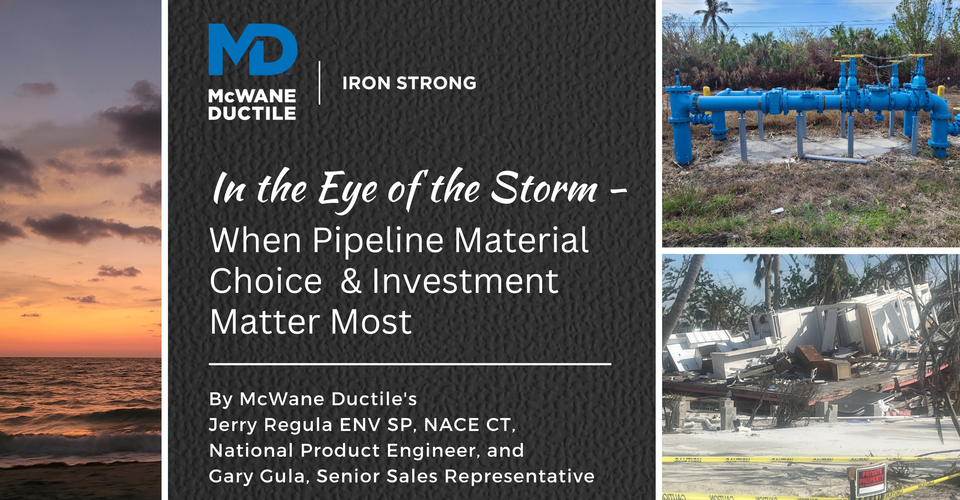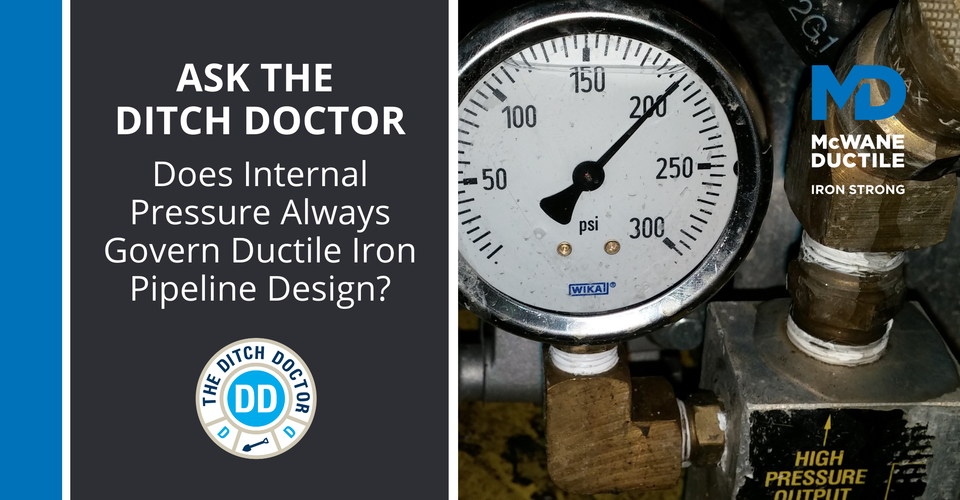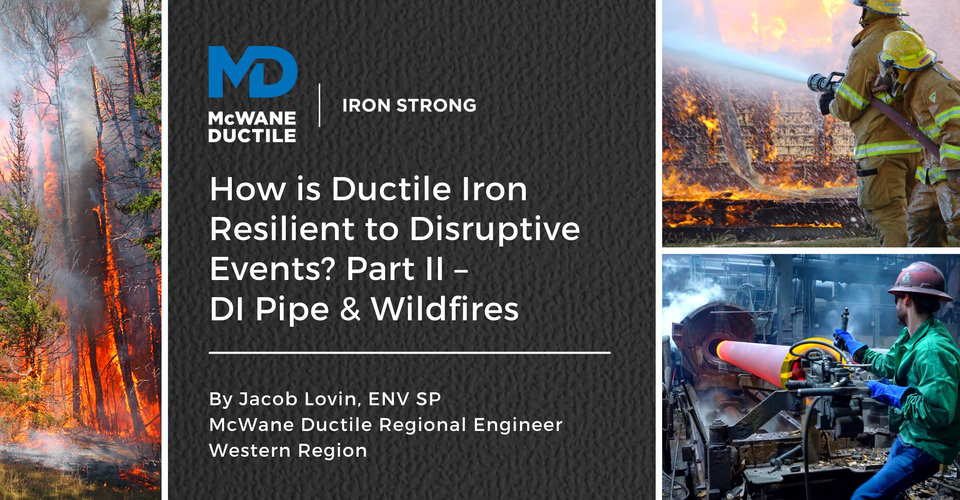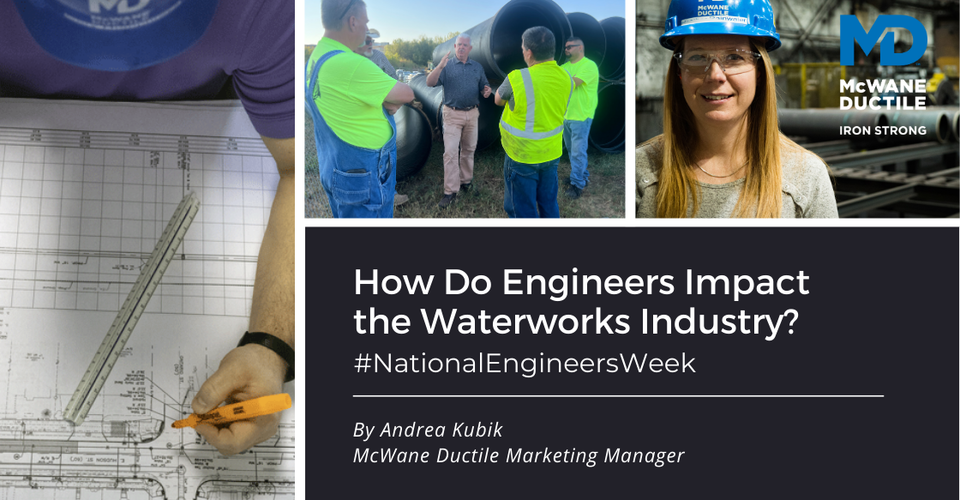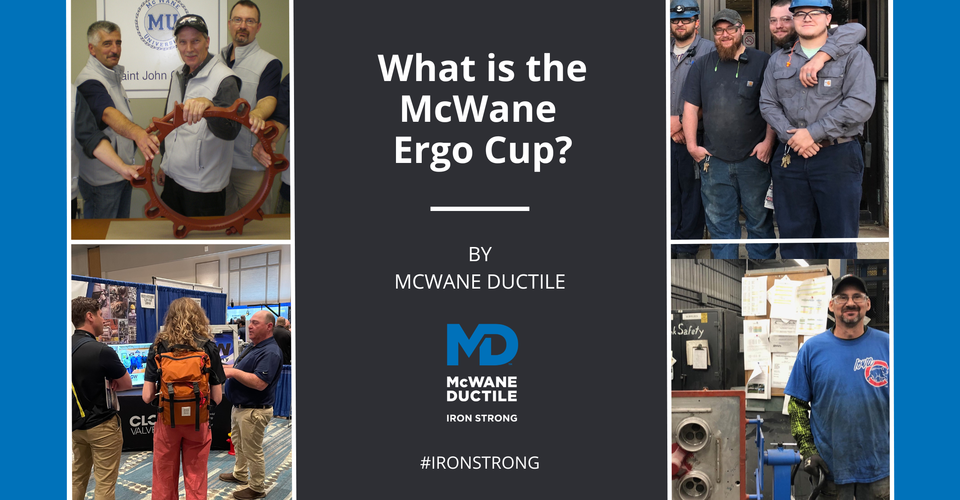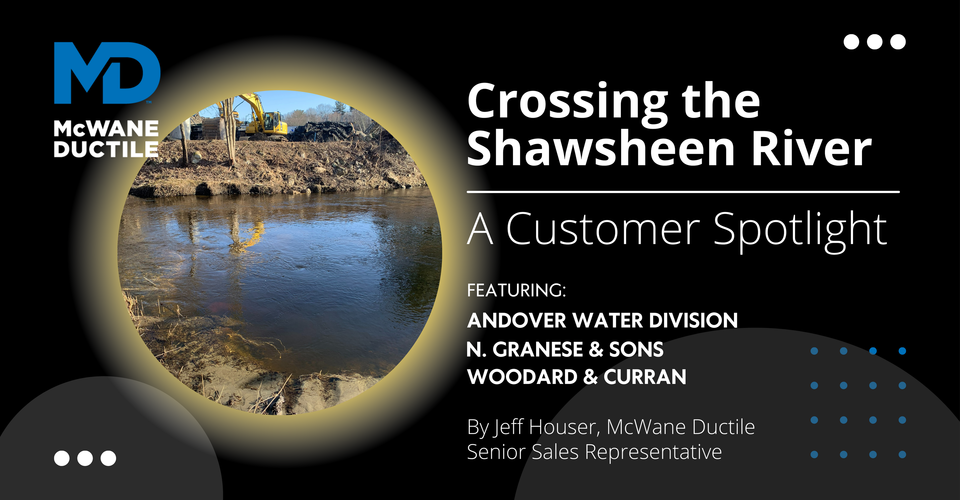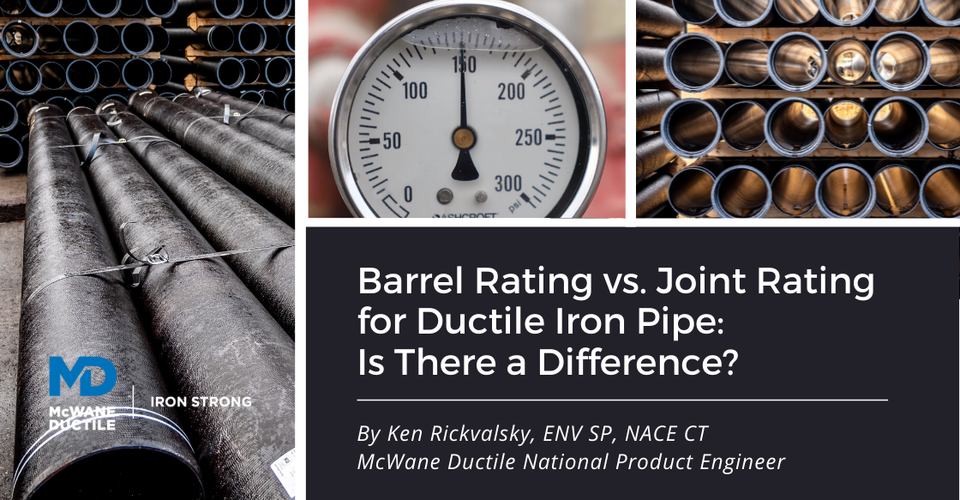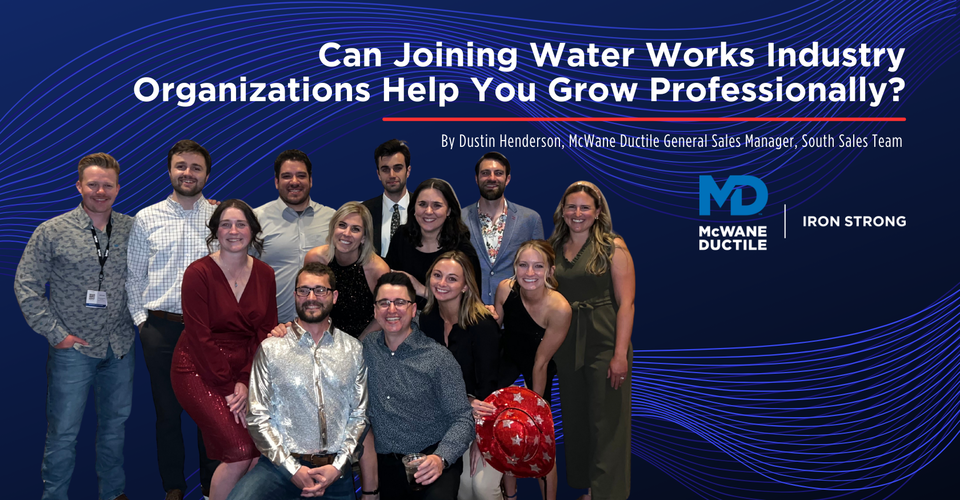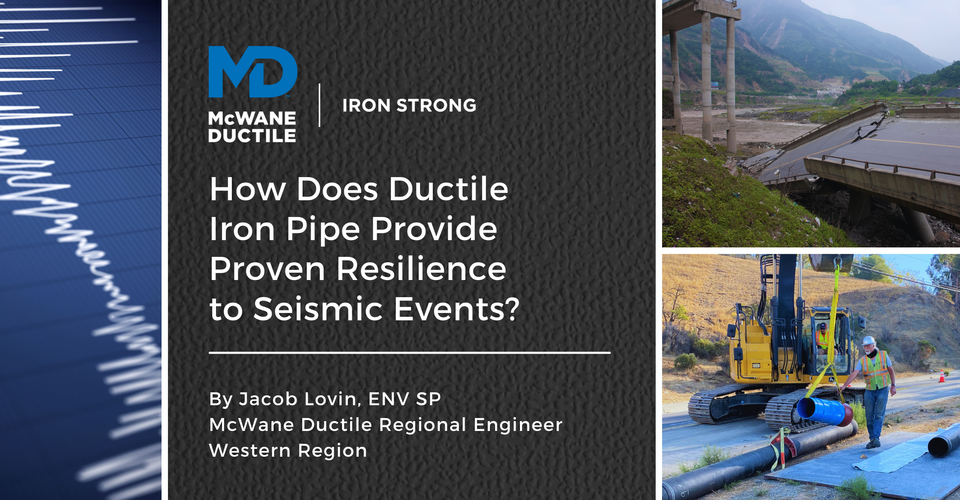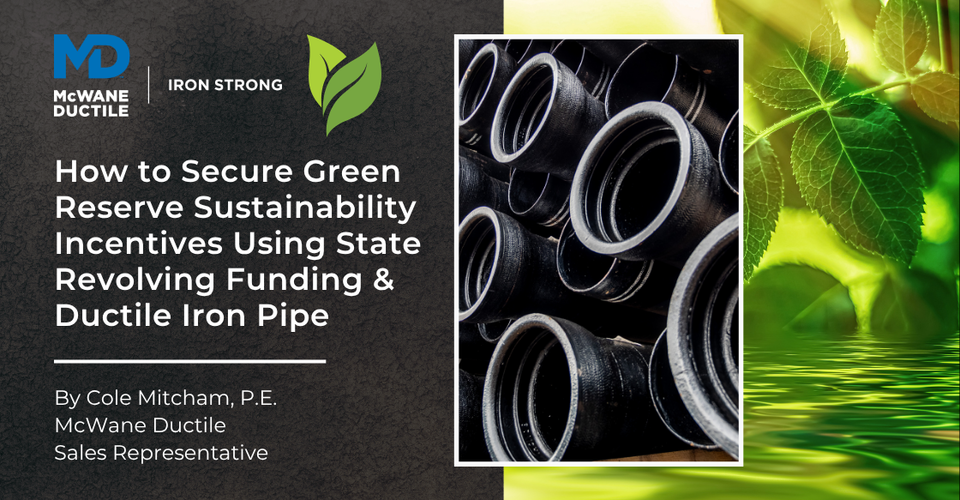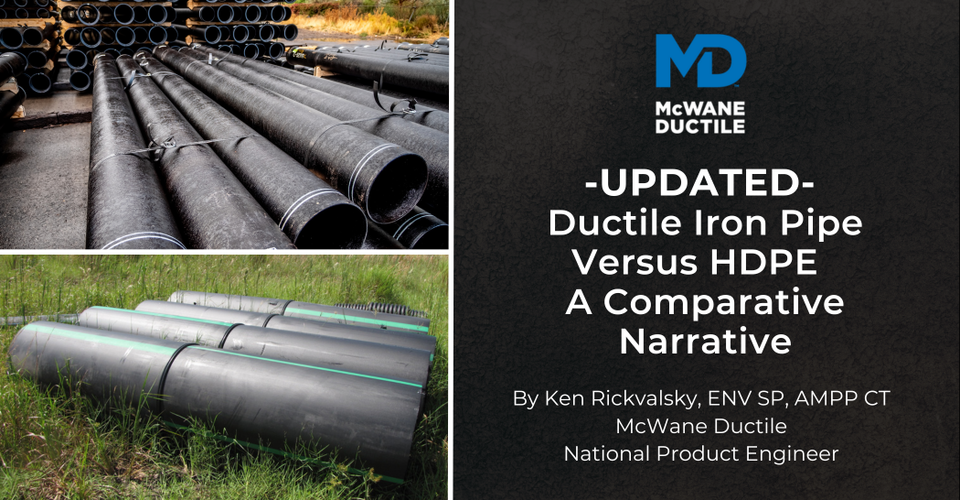-
In the Eye of the Storm - When Pipeline Material Choice & Investment Matter Most
02/23/2023 In ProductsJerry, Sept 24, 2022; I'm sitting on the beach near the northern tip of Captiva Island, Florida. I’m on vacation with my wife, enjoying the warm sun, dolphins playing, and birds feeding as if there was no care in the world. Admittedly, most people in the area were already aware of the tropical storm developing in the Caribbean Sea and wondered, will the storm become a hurricane?
-
Ask the Ditch Doctor - Does Internal Pressure Always Govern Ductile Iron Pipeline Design?
03/04/2022 In Ditch Doctor Installation TechnicalHave you ever been so taken aback by the structure of a question that your first thought is, “say what? Did they really just ask me that?” In the vernacular-sensitive world of utility pipelines, it happens more often than you might think.
-
How is Ductile Iron Resilient to Disruptive Events? Part II – DI Pipe & Wildfires
04/22/2025 In Products Resiliency TechnicalThe landscapes and environments in which we live are constantly changing, and ensuring that resilient infrastructure is in place to support local communities is a priority for all cities. In regions where natural disasters occur and pose significant threats, such as wildfires and earthquakes, and as seen most recently in areas such as Lahaina, Hawaii, and the Palisades in the Santa Monica Mountains of Los Angeles County, California, Ductile iron pipe (DI pipe) has proven to be a durable and reliable choice for water infrastructure. This article will discuss why selecting the proper material for underground infrastructure is crucial in combating natural disasters and enabling communities to respond more effectively with a reliable source of potable water and vital fire protection.
-
How Do Engineers Impact the Waterworks Industry?
02/26/2022 In Our Company ProductsIt’s National Engineers Week (EWeek). Founded by the National Society of Professional Engineers in 1951, (EWeek) is dedicated to promoting careers in engineering and technology to develop a diverse and well-educated future engineering workforce. This #IronStrong Blog spotlights the importance of engineers and how they impact the waterworks industry.
-
What is the McWane Ergo Cup?
01/31/2023 In Environmental & Safety Our CompanyErgonomics is an applied science concerned with designing and arranging objects people use so that people and things interact most efficiently and safely. Reducing the risk of injury through proactive programs is one of the many ways we do our best to improve the ergonomics of the ways we make our products. At McWane Ductile and McWane corporate-wide, health and safety are the top priorities, hence the Ergo Cup.
-
Crossing the Shawsheen River - A Customer Spotlight
05/04/2023 In ProductsThe Town of Andover, located in the northeastern corridor of Massachusetts, provides water service to over 10,000 customers in a network of approximately 257 miles of water mains, the oldest dating back to 1886. This #IronStrong blog tells how the Andover Water Division solved a significant water loss issue due to a breach in one of their important mains feeding a commercial/industrial area.
-
What is Open Procurement from an Engineer’s and Utility Manager’s Perspective?
06/11/2021 In Products TechnicalThere is a national effort to deny engineers, utilities, municipalities, public entities, and other waterworks professionals the ability to design water, wastewater, and stormwater projects in the manner that best serves the needs of their community. This effort focuses on water system piping but could be expanded to other infrastructure materials, as well. This blog contains a Q&A session conducted with a civil engineer, John Simpson, and a former utility manager, Roy Mundy, regarding Open Procurement.
-
How Does Ductile Iron Pipe Go to Market? Understanding the Bidding Process
07/09/2021 In Our Company ProductsHow do you go to market? This isn’t a question we get often, but it comes up from time to time. Sometimes we're asked by a vendor we work with who is trying to understand McWane Ductile better. Sometimes a candidate asks the question during an interview or a new sales representative asks while we’re onboarding. Other times we have a hard-working team member at one of our manufacturing facilities trying to understand further what and where the product they make goes and how it gets there. In this blog, we will look at the different bidding processes we encounter on a day-to-day basis that allow us to take Ductile iron pipe to market.
-
Vicinity Energy Cuts Greenhouse Gases with Ductile Iron Pipe
08/27/2021 In Installation ProductsVicinity Energy, headquartered in Boston, Massachusetts supplies many downtown Baltimore, Maryland business corridor buildings with reliable central water services, offering a cost-effective alternative to maintaining in-house cooling equipment. In this Iron Strong Customer Spotlight, we’ll take a closer look at a recent Ductile iron pipe (DI pipe) installation project that will provide a means for sustainable, affordable energy in the Baltimore area for many years to come.
-
Barrel Rating vs. Joint Rating for Ductile Iron Pipe: Is There a Difference?
10/15/2021 In TechnicalWhenever the word "rating" is used regarding Ductile iron pipe (DI pipe), a 100-psi surge allowance and a safety factor of 2.0 are consistently included for all wall classes. This leads to conservative yet versatile designs for the long-term performance of utility pipelines of all kinds in various or changing conditions. Hence the basic universal rating for DI pipe is 350-psi which equates to a minimum of 900-psi of hydrostatic pressure containment within the pipeline.
Latest Posts
- Can Joining Water Works Industry Organizations Help You Grow Professionally? 10/21/2025 In Careers WaterWorks
- How Does Ductile Iron Pipe Provide Proven Resilience to Seismic Events? 09/04/2025 In Products Resiliency Technical
- How to Secure Green Reserve Sustainability Incentives Using State Revolving Funding & Ductile Iron Pipe 07/29/2025 In Energy Products Technical
- UPDATED - Ductile Iron Pipe Versus HDPE - A Comparative Narrative 05/29/2025 In Comparisons Products Technical

